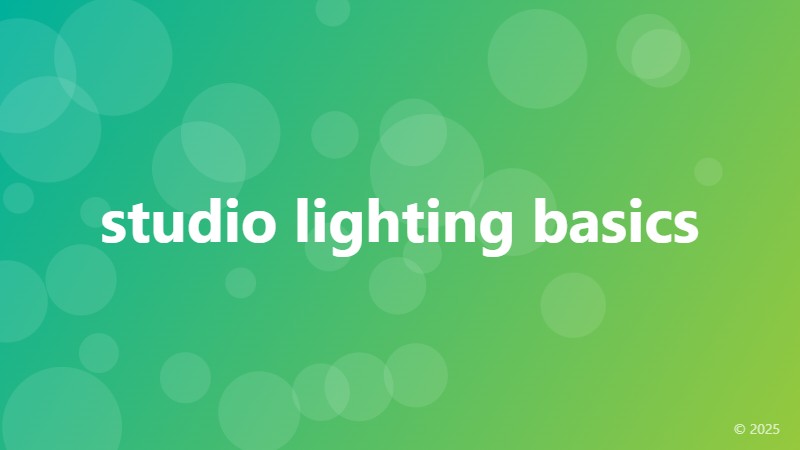studio lighting basics

Understanding Studio Lighting Basics: A Beginner's Guide
As a photographer, understanding studio lighting basics is crucial to capturing stunning images that tell a story. Studio lighting is an art that requires a deep understanding of how light behaves and how to manipulate it to achieve the desired effect. In this article, we'll delve into the fundamentals of studio lighting, covering the essential concepts, techniques, and equipment you need to get started.
The Importance of Lighting in Studio Photography
Lighting is the backbone of studio photography. It can make or break an image, and a good understanding of studio lighting basics can elevate your photography skills from amateur to professional. Proper lighting can enhance the mood, texture, and atmosphere of an image, while poor lighting can result in unflattering, uninteresting photographs.
In a studio setting, you have complete control over the lighting, which allows you to create a wide range of moods and effects. By mastering studio lighting basics, you can experiment with different lighting setups, techniques, and styles to develop your unique visual voice.
The Three Key Components of Studio Lighting
A studio lighting setup typically consists of three key components: the light source, the modifier, and the light stand.
Light Source: This is the device that produces the light. Common light sources include strobe lights, continuous lights, and LED lights. Each type of light source has its own unique characteristics, advantages, and disadvantages.
Modifier: This is the device that shapes and softens the light. Modifiers can be softboxes, umbrellas, reflectors, or grids, and they help to control the spread, direction, and quality of the light.
Light Stand: This is the support system that holds the light source and modifier in place. Light stands come in various heights and styles, and they allow you to position the light exactly where you need it.
Key Studio Lighting Techniques
Now that you have a basic understanding of the components, let's explore some essential studio lighting techniques:
High-Key Lighting: This technique involves using a bright, even light to create a minimalist, high-contrast look. High-key lighting is often used in beauty, fashion, and product photography.
Low-Key Lighting: This technique involves using a single, directional light source to create deep shadows and a moody atmosphere. Low-key lighting is often used in portrait, drama, and fine-art photography.
Sidelighting: This technique involves positioning the light source at a 90-degree angle to the subject, creating a dynamic, three-dimensional effect. Sidelighting is often used in portrait, fashion, and still-life photography.
Conclusion
Mastering studio lighting basics takes time, practice, and patience. By understanding the fundamental components, techniques, and concepts, you'll be well on your way to creating stunning, professional-looking images that showcase your unique vision and style. Remember to experiment, take risks, and push the boundaries of what's possible with studio lighting.